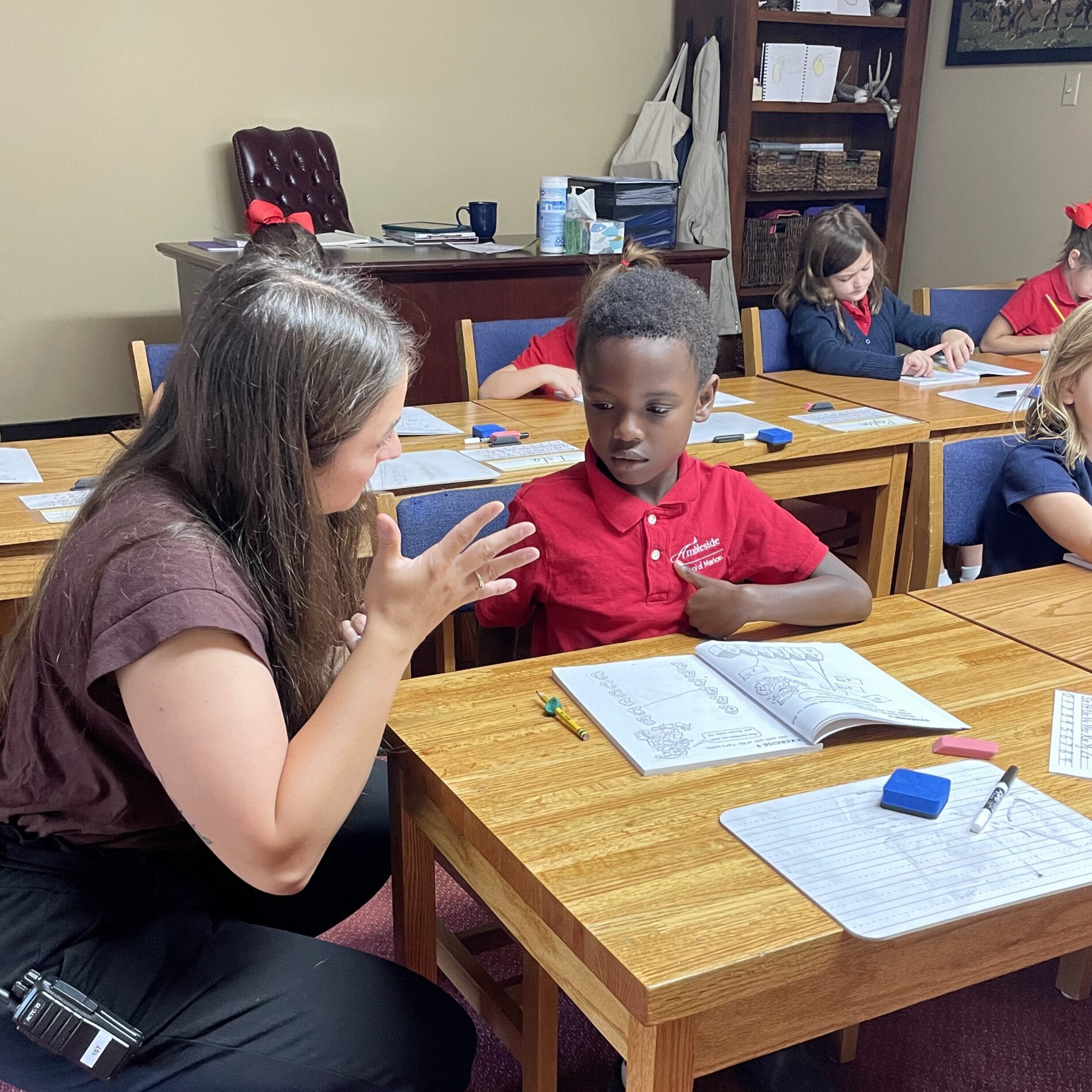Ambleside Schools International Articles

Image courtesy of Ambleside School of Colorado.
Browse more Ambleside Schools International Resources.
Video Series Part 5. The Importance of Atmosphere
Chapter Two: How Atmosphere Sets Affections
With the idea in mind that ‘children are persons’ born with vast capacity and an innate desire for knowledge, at Ambleside we take care in considering how we are contributing to or forming a child’s affections—what is taking up space in the child’s sacred heart and mind?
In this next part in our video and discussion guides, we flesh out Charlotte Mason’s ideas on how to ‘excite appetency … toward things lovely, honest, and of good report.’ And we wholeheartedly agree that this is the earliest and most important ministry of the educator.
Ideas may invest as an atmosphere, rather than strike as a weapon. ‘The idea may exist in a clear, distinct, definite form, as that of a circle in the mind of a geometrician; or it may be a mere instinct, a vague appetency towards something, … like the impulse which fills the young poet’s eyes with tears, he knows not why:
To excite this ‘appetency towards something’–towards things lovely, honest, and of good report, is the earliest and most important ministry of the educator.
How shall these indefinite ideas
which manifest themselves in appetency be imparted?
They are not to be given of set purpose, nor taken at set times. They are held in that thought-environment which surrounds the child as an atmosphere, which he breathes as his breath of life; and this atmosphere in which the child inspires his unconscious ideas of right living emanates from his parents. Every look of gentleness and tone of reverence, every word of kindness and act of help, passes into the thought-environment, the very atmosphere which the child breathes; he does not think of these things, may never think of them, but all his life long they excite that ‘vague appetency towards something’ out of which most of his actions spring. Oh, wonderful and dreadful (awe inspiring) presence of the little child in the midst!1
Next, that knowledge, in this light, is no longer sacred and secular, great and trivial, practical and theoretical. All knowledge, dealt out to us in such portions as we are ready for, is sacred; knowledge is, perhaps, a beautiful whole, a great unity, embracing God and man and the universe, but having many parts which are not comparable with one another in the sense of less or more, because all are necessary and each has its functions. Next, we perceive that knowledge and the mind of man are to each other as are air and the lungs. The mind lives by means of knowledge; stagnates, faints, perishes, deprived of this necessary atmosphere.2
Questions and Thoughts to Consider:
- In the video, Dr. St Cyr referred to a “child’s atmosphere.” What does this look and feel like? And why does this atmosphere inhibit growth?
- Explain the nature of ideas – how they are invested in the atmosphere and how they strike as a weapon. Give examples.
- What is the most important role of the educator according to Charlotte Mason? Why?
- How are these ideas imparted?
- Contrast ideas given in through a thought-atmosphere and those given during a set purpose and a set time.
- Describe the nature of knowledge in the thought-atmosphere presented by the educator.
- What might we deduce from this statement, “The mind lives by means of knowledge; stagnates, faints, perishes, deprived of this necessary atmosphere”?
1 Charlotte Mason, School Education, 326.
2 Charlotte Mason, School Education, 94.



